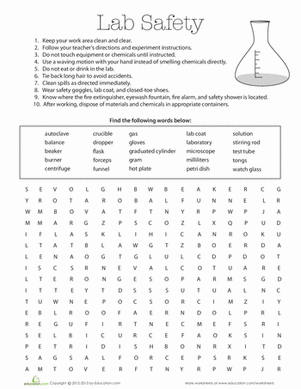Science project
Geology 101
Grade Level: 2nd - 6th; Type: Earth Science
Objective:
The goal of this experiment is to learn about (1) the behavior of water and gravel in creek beds and (2) the formation of sedimentary rocks.
Research Questions:
- How does water carry materials in a creek bed?
- How do the materials carried by the water in a creek shape the landscape?
- What are the three families of rocks and how are they formed?
- How are sedimentary rocks formed?
Most of us have watched water in creek beds. While water running through a creek bed may seem like very simple phenomena, it is actually quite complex. Rapidly flowing water transports soils and sand from one place to another. Rapidly flowing water can even transport pebbles and small rocks small distances. If the creek widens substantially, the rate of water flow will drop off so that even the mud and silt can no longer be transported.
Sedimentary rocks are rocks made from different layers of mud, silt, clay and sand that have been subject to sufficient pressure that they stick together. Slate and sandstone are two common types of sedimentary rock.
Materials:
Most ingredients are probably available at home or nearby environment. If necessary, pebbles can be acquired at a nursery.
- Small bucket of soil
- Small bucket of sand
- Small bucket of gravel and small pebbles
- Small bucket of larger pebbles and rocks
- Large watering can
- Board approximately 4-6 feet long by at least 1 foot wide
- Brick or cinderblock
- Large transparent half-gallon glass jar. In a pinch, a quart-size jar will work fine.
- Notebook and pencil
Experimental Procedure:
- Mix your soil, sand, pebbles, gravel and rocks together.
- Prop up one end of your board with the brick or cinderblock to create a ramp.
- Distribute the mixture you made in step one evenly across the board.
- Fill your watering can with water.
- Standing near the high end of the ramp you made in step 2, gently pour the water from the watering can on the high end of the ramp and let is run down the ramp.
- What materials moved easily? Which moved least? Did any material get dropped off along the sides of the ramp?
- Put 1 cup sand, 1 cup soil, 1 cup gravel and 1 cup large pebbles into the half-gallon jar. If you use a smaller jar, adjust the amounts of material accordingly so that the combination of materials fills the jar no more than half way.
- Fill the jar with water, shake vigorously and let the water stand.
- Inspect the jar every 5 minutes for 15 minutes. Continue inspecting the jar once a day for seven days. Eventually, material will become so settled that the water will be almost entirely clear. Note the layering of the materials. Where do you think shale would form? Sandstone? Conglomerates?
Terms/Concepts: Behavior of suspended material in flowing water; Width of a creek as related to the speed of flowing water; Width of a creek as related to accumulation of mud, sand and silt; Sedimentary rocks
References:
- NatGeoKids: Geology 101
- American GeoSciences Institute: How does a river change the land?
- USGS: What are sedimentary rocks?
- National Geographic Society. Earth Science. McGraw Hill (2002).
Education.com provides the Science Fair Project Ideas for informational purposes only. Education.com does not make any guarantee or representation regarding the Science Fair Project Ideas and is not responsible or liable for any loss or damage, directly or indirectly, caused by your use of such information. By accessing the Science Fair Project Ideas, you waive and renounce any claims against Education.com that arise thereof. In addition, your access to Education.com's website and Science Fair Project Ideas is covered by Education.com's Privacy Policy and site Terms of Use, which include limitations on Education.com's liability.
Warning is hereby given that not all Project Ideas are appropriate for all individuals or in all circumstances. Implementation of any Science Project Idea should be undertaken only in appropriate settings and with appropriate parental or other supervision. Reading and following the safety precautions of all materials used in a project is the sole responsibility of each individual. For further information, consult your state's handbook of Science Safety.













